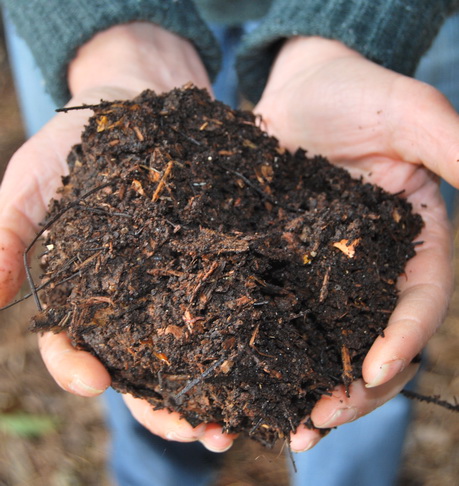The key to doing this is using a variety of materials when filling your bin and then a little bit of effort from you. It is a method known as Cold Composting because the materials just chug away being broken down without extended periods of heat being generated.
.
Don't ignore the balance of materials that are needed: essentially Carbon, Nitrogen, Oxygen and Water. But don't let the chemistry put you off either!
You can use these in your compost bin:
HIGH NITROGEN: Green garden leaves, coffee grounds, teabags, kitchen peelings, lawn clippings, blood and bone, chicken or other bird manures, rabbit/guinea pig manure, other organic fertilisers
HIGH CARBON: Newspaper, cardboard, egg cartons, toilet rolls, pizza cartons, straw, animal bedding, wood shavings (untreated wood), bark chips, old mulch, old potting mix, small twigs
START WITH
Put the bin on bare soil.
- At the base, place some woody twigs or dried stems of plants.
- Next add a layer of the high carbon materials, about 20-30cm deep.
- You can then start to add your kitchen peelings and scraps.
- Every week, you must add materials from the High Carbon list to your compost bin as well.
Repeat steps 3 and 4 until the bin is full, alternating the layers making sure the contents are not completely dry.
EVERY WEEK
Turn over the contents as much as you can, using an aerator or a garden fork.
You might see steam rising from the contents as you mix them up and you will
notice that the volume of the contents goes down as you turn over.
Repeat this every week.
WHEN TO STOP?
Filling a compost bin like this means that it is difficult to fill. You will need to decide when to stop filling it and leave it to finish breaking down, or decomposing. Keep turning it regularly but DO NOT add anything else to the bin.
You will need another compost bin to start the process once again while the first one finishes its decomposition into compost.
IN A FEW MONTHS
Your compost should be ready. It should be sweet-smelling, or at least have no distinctly off-putting odour. It should be moist without being wet. You may see worms in your compost bin as well. Spread the compost over the soil and cover it with mulch. The worms will drag it through the soil for you as they munch their way through it – and your garden will love you!
